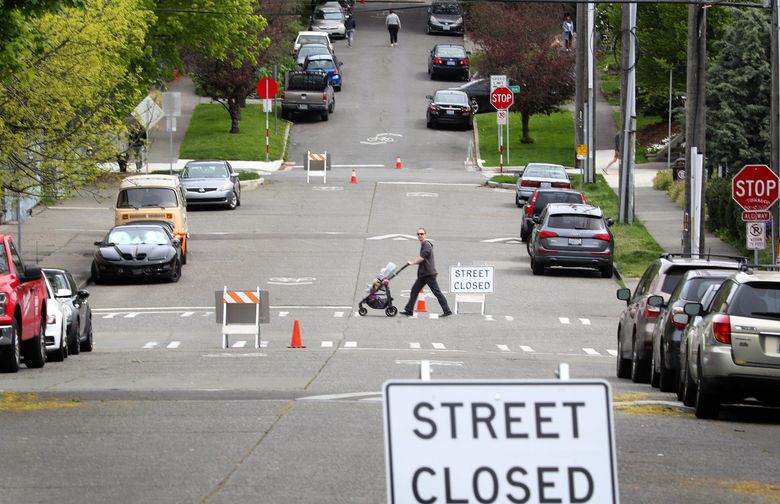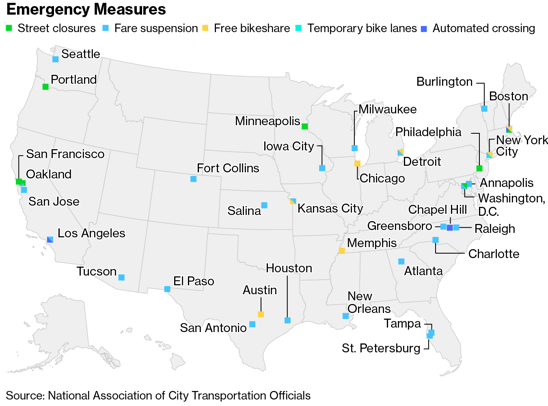By ROBERT ORR The Hartford Courant August 7, 2011
Stop and go. Stop and go. Stop and go. Man, city driving can be a drag. What makes highway driving so much quicker?
City streets are designed to the exact same standards as highways — traffic engineers are trained to build highways and nothing else — so there shouldn't be a difference. So, why does traffic creep along inside city limits when streets are just like highways?
The problem lies at the intersections. Cars can, and do, achieve highway design speeds between intersections, but waiting at red lights kills the averages. Next time you're traversing city streets, reset your car's average mph computer (if your car is so equipped) and you'll find that even though you achieve bursts of 40 to 60 mph, your average speed settles in around 12 to 14 mph, unless congestion drops it further.
To be sure, no small effort has been devoted to combating the inefficiency of intersections, including traffic signals, convoluted timing devices for synchronization, striping lines, signs, etc. But so far the complexities of urban street systems continue to dog all such efforts. So we wait and wait for the light to change.
What would happen if we took the opposite tack? What if intersections were wiped clean of all the clutter? What if there were no stop lights, no signs, no striping?
As crazy as this idea may seem, not only has it received serious attention but it's actually gaining traction around the globe, including tentative forays in the U.S., with consistently impressive results.
It was first done to slow traffic speeds and improve safety, but mounting statistics indicate that where streetlights and stop signs are removed, top speeds drop from 40-60 mph to 20-30 mph, but average speeds increase from 12-14 mph to 17-19 mph. In other words, overall trip times drop when all signage and signals are removed, even though top speeds decrease. However, the biggest shocker is that accidents drop by half.
The simple explanation is that people, whether they are drivers, bicyclists or pedestrians, become more aware of each other, and preternatural avoidance systems take over to protect us from each other — just like the common sense that kicks in to prevent people from crashing into one another on a crowded ice skating rink.
The technique of creating "shared streets," where people, bicycles and cars all coexist in one shared space without signals and signage, found its roots in the late 1960s when Dutch traffic planner Hans Monderman worked with a largely grass-roots group to attack mounting safety concerns on roads. It was Monderman who first determined that common-sense instincts could trump all the separation and control devices that dominate roadway design.
His best-known early success was the Dutch "Woonerf," or "Living Street" project in Delft in 1968. He continued to develop the concept at intersections throughout the Netherlands until his death in 2008.
While Monderman's initiatives were primarily aimed at calming traffic and improving safety, other benefits emerged as signs and signals were removed. Merchants and property owners began to notice demonstrable increases in foot traffic in the newly shared streets, which led to increased retail sales, restaurant usage and demand for housing.
In other words, the unintended consequence of Monderman's safety efforts was to stimulate economic prosperity. The prosperity factor significantly widened the band of advocates for his cause, already named the Monderman Model.
In his spirit, Ben Hamilton-Baillie, a British architect and urban designer, began similar efforts. Like Monderman, Hamilton-Baillie began his career focused on street safety, in his case for bicyclists. He came to see that the Monderman Model offered obvious applications to safe bicycling.
Over the past 11 years, Hamilton-Baillie has created shared space, removing all traffic signals, signage and striping, at intersections in 56 communities in the U.K., including London, as well as in communities in Germany, Ireland, France, Italy, Netherlands, Denmark, Sweden, Spain, Saudi Arabia and Canada. In all cases, interventions consistently lowered driving speeds, shortened trip times and significantly improved pedestrian, bicycle and vehicular safety.
As in the Monderman Model, Hamilton-Baillie's projects increased foot traffic in the shared space areas, and increased economic prosperity, or "uplift," as the British call it.
At one such project, the Great Queen Street shared space in London, residential retail and commercial uplift has been more than $800 million, according to a study.
Of course the reverse lesson of shared space projects is the deadening effect of streets designed like highways. These streets were supposed to improve safety and mobility and don't even do that, much less foster prosperity. It is time to stop the madness. Joining pedestrians, bicycles and vehicles in shared space releases normative human behaviors that could rekindle that dusty old project, civilization. Let's speed it along.
Robert Orr is an architect and planner in New Haven.




 n with a lorry as she crossed the junction of Alcester Road and Salisbury Road on November 9 while four boys died when the car in which they were travelling hit a wall in Salisbury Road on November 14.
n with a lorry as she crossed the junction of Alcester Road and Salisbury Road on November 9 while four boys died when the car in which they were travelling hit a wall in Salisbury Road on November 14.


